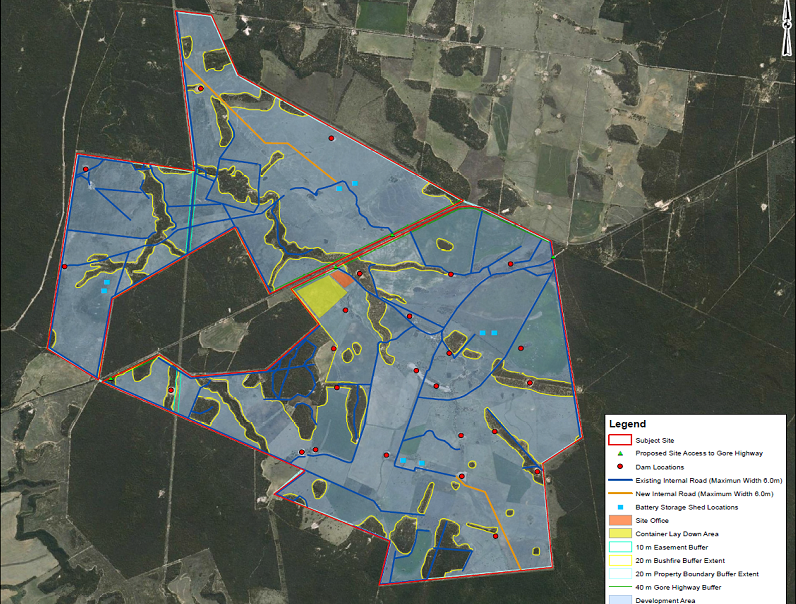At 2 gigawatts of capacity, once completed Solar Choice’s Bulli Creek Solar Farm will be the largest project of its kind in Australia – and among the largest in the world. For a project of this size, a substantial amount of land is required. This article takes a look at the site of this mega-project and the reasons this particular location was selected.
Why Bulli Creek?
The Bulli Creek Solar Farm is to be constructed about 150 kilometers west of Toowoomba and will span roughly 13,000 acres of cattle grazing land. Although this remote location – being far away from from the urban centres where electricity demand is generally highest – may at first glance seem a curious choice, there site was carefully chosen for a few key reasons.
The first were space and solar fuel: both land and sunshine are of course in ample supply in Bulli Creek, as they are in most of regional Queensland. But even more important in the site’s selection was its close proximity to a 330 kV power substation located along one of the main transmission lines spanning the NSW-QLD border, just west of the Great Dividing Range. It is this relatively unusual combination of factors that make the Bulli Creek site such an attractive spot for a solar farm of this magnitude.
“If you follow the transmission network around the country, there are actually surprisingly few locations where there is everything aligning at once for such a site,”said Solar Choice managing director Angus Gemmell in a recent interview with PV Magazine.
“There are plenty of large transmission nodes by the urban centers but then you have to aggregate hundreds of landowners to get scale – which won’t work. The ones west of the Great Dividing Range are in forest or in steep country so they are not suitable and to connect into the tranmission network you can’t key into the grid, you have to plug into an exisiting node, so you don’t reun the risk of tripping half of Australia out! So having all of those circumstances aligning at once is rare.”
The indicative footprint of the Bulli Creek Solar Farm submitted for the development proposal.
The future location of the Bulli Creek Solar Farm. The white square to the north is the electricity substation.
Video flyover of the proposed Bulli Creek Solar Farm from Solar Choice on Vimeo.
Cattle farming to solar farming
On top of the critical need to be close to infrastructure, there was also the issue of the suitability of the land itself. The solar farm would need to be on relatively flat, pre-cleared country with no risk of flooding. The swath of land eventually selected met both of these criteria: a collection of three adjacent family-owned cattle-grazing properties (all cleared decades ago) straddling the eponymous Bulli Creek but located at the high end of the watershed. All of the existing wildlife corridors along the location’s creeks and ridges will be preserved throughout construction and operation of the solar farm.
The owners of the properties were enthusiastic about the prospect of using their land for solar power from the outset. “The owners could see the benefits of a secure, passive and drought-proof income stream for them and their descendants for up to 50 years,” says Mr Gemmell. “Additionally, because the project will be built out in stages, the owners will all be able to move their cattle into areas not yet occupied by the solar farm, so that their land remains productive in the interim.”
Gallery: Site of the future Bulli Creek Solar Farm
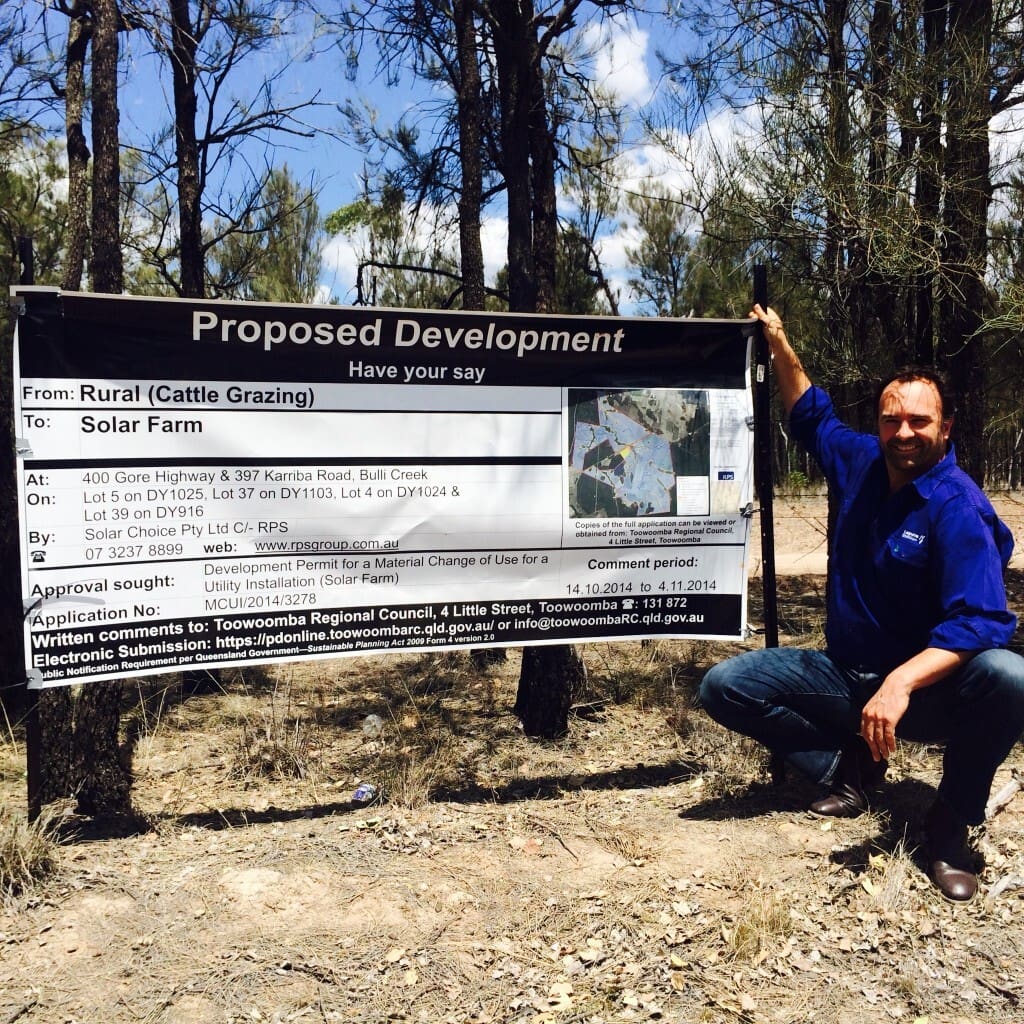
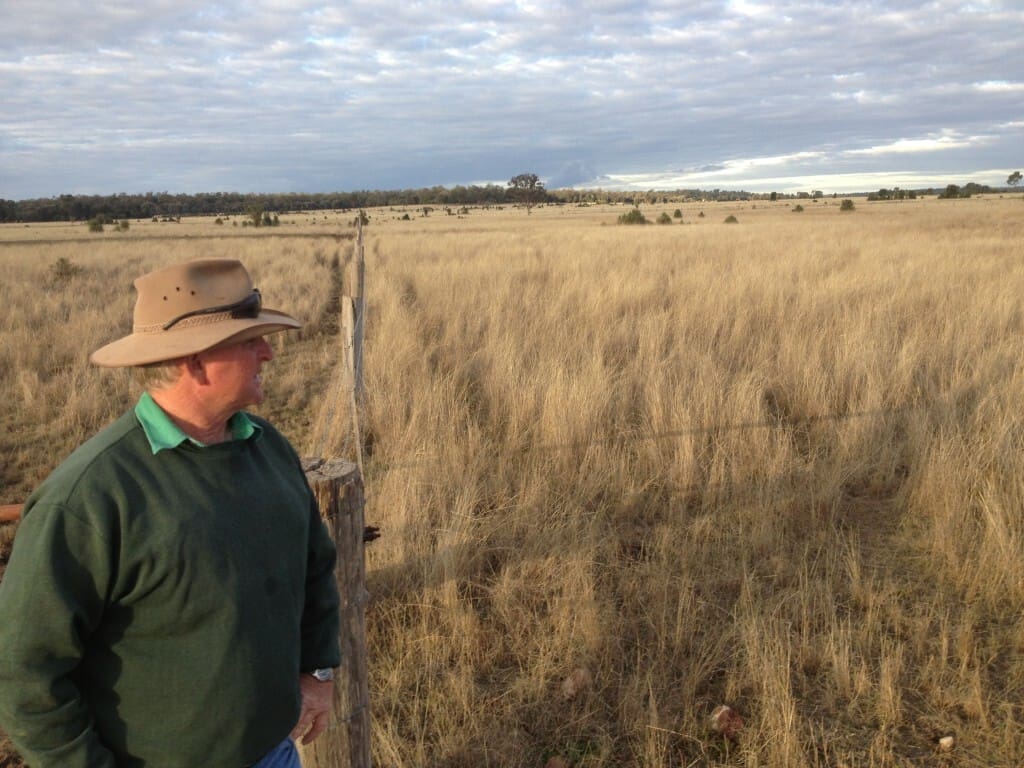
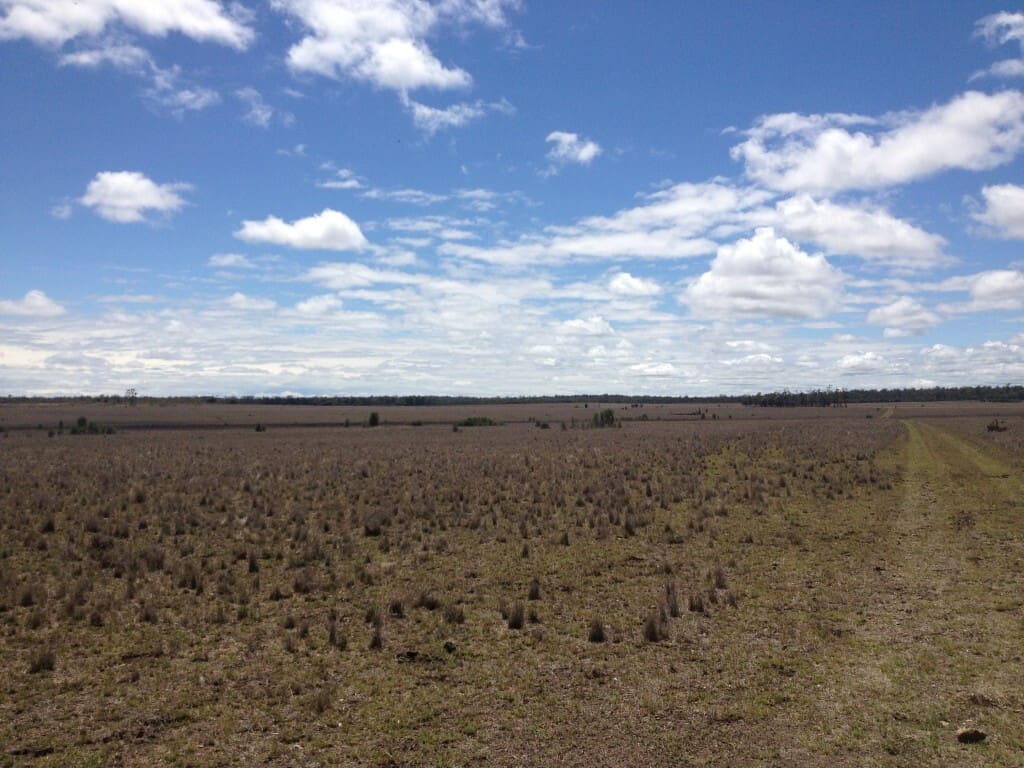
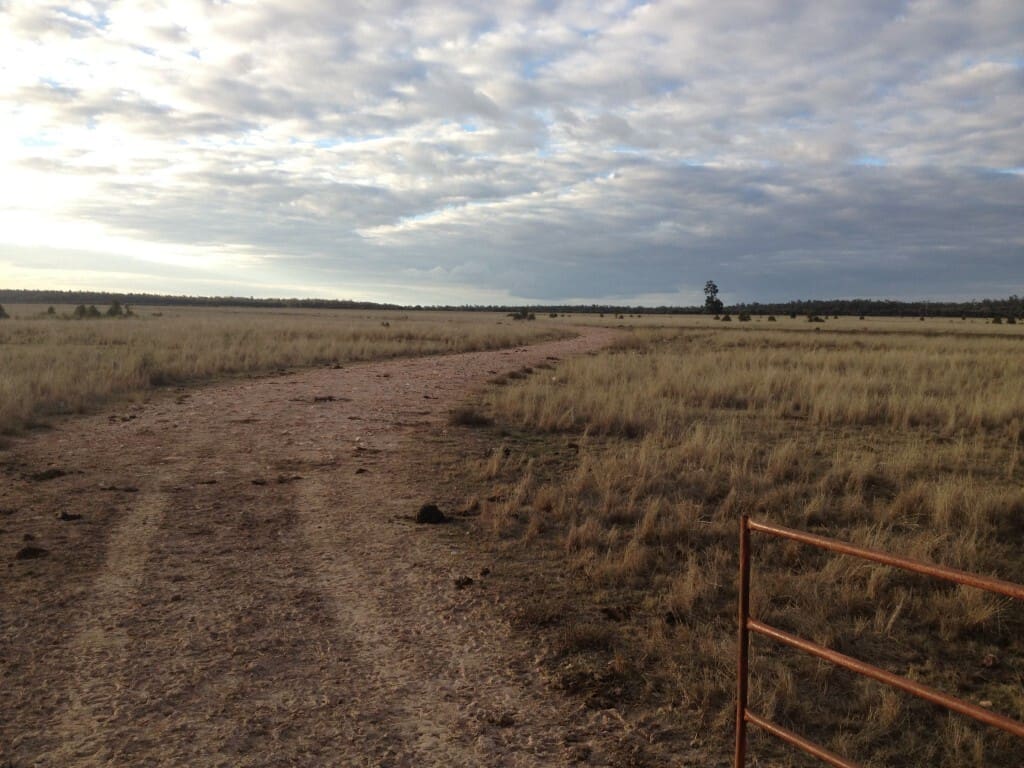
Bulli Creek in the news
Thanks to its scale, the Bulli Creek Solar Farm has garnered substantial media attention since the planning approval for the project was granted earlier this year. Some examples include:
- The Guardian: Under the sun: Australia’s largest solar farm set to sprout in a Queensland field
- Recharge News: IN DEPTH: Crunch looms as Australia PM refuses to move on RET
- PV Magazine: ‘Large-scale solar is on the right side of history‘/ Big PV’s prospects down under
- RenewEconomy: Council approves 2GW mega solar project plan in Queensland
- Climate Spectator: Solar Choice’s Toowomba PV farm approved / Renewable target ‘can absolutely be reached’
- Sydney Morning Herald: Mega $1 billion Darling Downs solar farm approved
- Climate Action Programme: $1bn solar farm to be Australia’s largest
- Daily Mail: Let there be light! Aussie firm gets the go-ahead for massive solar farm with 50 SQUARE KILOMETRES of panels that will generate enough juice to power half a MILLION homes
- ABC Rural: Solar Choice’s Angus Gemmell outlines plans for Australia’s largest solar farm
- The Chronicle: Billion-dollar solar farm fires nation’s imagination
